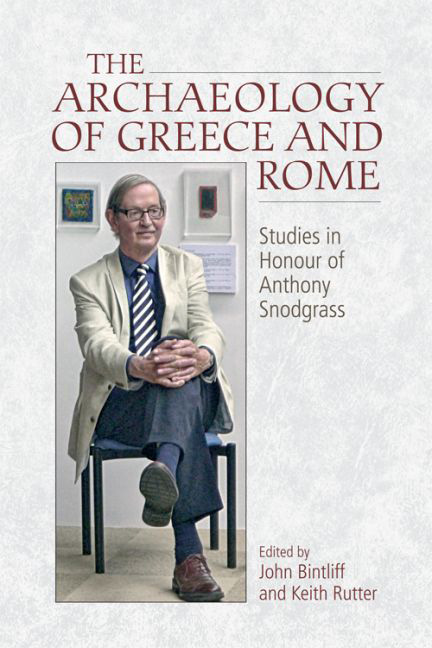Book contents
- Frontmatter
- Contents
- Preface
- List of Contributors
- List of Abbreviations
- Section I Prehistory
- Section II Around Homer
- Section III The Archaic and Classical Greek World
- Section IV The Greeks and their Neighbours
- Section V The Roman and Much Wider World
- 15 Loropéni and Other Large Enclosed Sites in the South-West of Burkina Faso: An Outside Archaeological View
- 16 The Poetics of Ruins in Ancient Greece and Rome
- 17 Context Matters: Pliny's Phryges and the Basilica Paulli in Rome
- Section VI The Scholar in the University and in the Field: Personal Histories
- Index
15 - Loropéni and Other Large Enclosed Sites in the South-West of Burkina Faso: An Outside Archaeological View
from Section V The Roman and Much Wider World
Published online by Cambridge University Press: 26 May 2017
- Frontmatter
- Contents
- Preface
- List of Contributors
- List of Abbreviations
- Section I Prehistory
- Section II Around Homer
- Section III The Archaic and Classical Greek World
- Section IV The Greeks and their Neighbours
- Section V The Roman and Much Wider World
- 15 Loropéni and Other Large Enclosed Sites in the South-West of Burkina Faso: An Outside Archaeological View
- 16 The Poetics of Ruins in Ancient Greece and Rome
- 17 Context Matters: Pliny's Phryges and the Basilica Paulli in Rome
- Section VI The Scholar in the University and in the Field: Personal Histories
- Index
Summary
For Anthony, this excursion from familiar territory is offered in admiration and gratitude for your leadership and for being a wonderful colleague over twenty years.
Introduction
The World Heritage site at Loropéni is the best-preserved of about a dozen large quadrangular sites enclosed by stone walls in the southwest of modern Burkina Faso. They are located mostly in the modern Départment of Loropéni a short distance west of the Black Volta river in the Savannah region, roughly midway between the river Niger and the southern edge of the Sahara and the forest belt close to the Atlantic south coast of western Africa (Fig. 15.1). Historically this region is crossed by the major north–south trade routes, linking the trans-Saharan trade of North Africa with the coastal regions. The area close to the sites has been gold-producing, with the mineral extracted from sedimentary deposits mainly by small-scale workings (Kiéthega 1983; Perinbam 1988); and it supports a modest agriculture with millet, sorghum and cotton among its principal products. It is occupied by several ethnic groups, notably the Lobi and the Gan, who, at the start of the colonial period a century ago, and still partly today, could be described as having a village-based social organisation and practising traditional religion (Labouret 1931; Père 1988; 2004).
Although there is considerable knowledge about the large enclosures (summarised most recently with respect to Loropéni by Simporé 2011), the dating and the context in which they were built have not yet been securely established. The present study is intended as a contribution to that. I write as an outsider (my normal area is European and Mediterranean urban archaeology), aware of the disadvantages that brings, but hoping that there might also be some advantage in distance.
As an introduction to the question it may be helpful to quote the description of Loropéni in the Statement of Outstanding Universal Value when it was inscribed on the list of UNESCO World Heritage sites in 2009:
The dramatic and memorable Ruins of Loropéni consist of imposing, tall, laterite stone perimeter walls, up to six metres in height, surrounding a large abandoned settlement.
- Type
- Chapter
- Information
- The Archaeology of Greece and RomeStudies In Honour of Anthony Snodgrass, pp. 361 - 381Publisher: Edinburgh University PressPrint publication year: 2016



